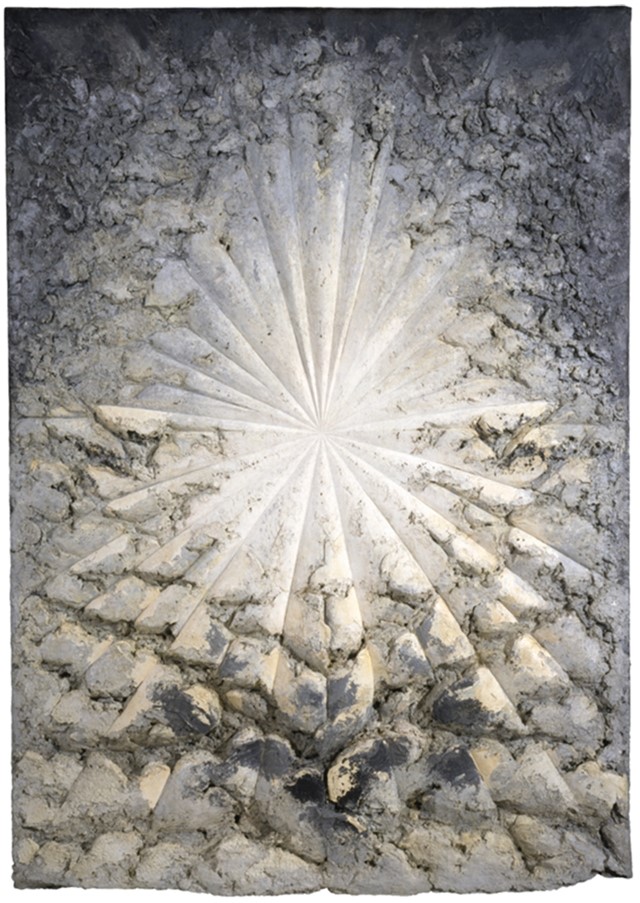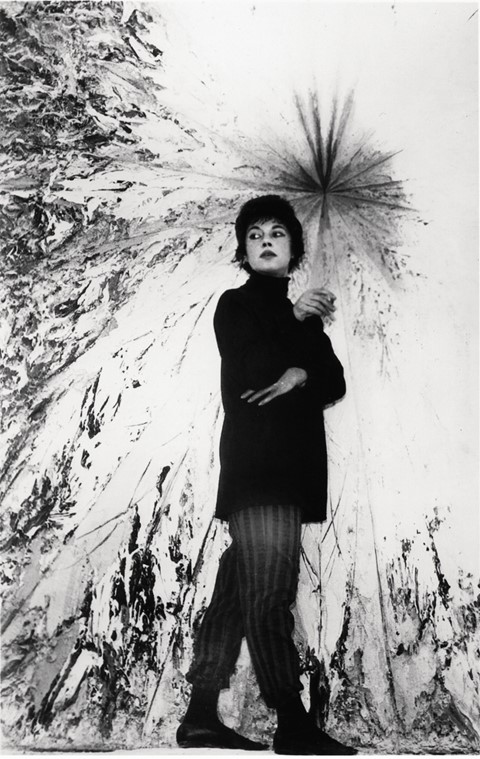We discover the fascinating story behind Jay DeFeo's monumental painting The Rose – an all-consuming passion translated to canvas
When Jay DeFeo’s monumental painting The Rose was fork-lifted out of the bay window of her secondstorey apartment in San Francisco – taking a piece of the wall with it – Bruce Conner, who filmed the scene, worried DeFeo might leap out after it. It was 1965, and for seven years the artist had worked on nothing else. Chain-smoking, drinking brandy and piling paint upon paint, DeFeo created a colossus that eventually weighed almost a ton, and was so glutinous it wouldn’t dry – visitors to her Fillmore Street apartment remembered it pulsating like flesh as they approached. Black and white oils mixed with mica chips imparted an eerie inner glow; it resembled a starburst from a distant solar system, or an ancient crystalline jewel.
"Chain-smoking, drinking brandy and piling paint upon paint, DeFeo created a colossus that eventually weighed almost a ton"
“It became the only thing in her life,” remembered Conner. “The room had no electricity. When the sun came up, she worked on the painting. The light went away, she left the room. The room was like a temple. But she was evicted because Jay had gotten too crazy. The neighbours were complaining. There was a dry cleaners below and they would see the telephone from her apartment hanging down like a fishing line with messages written on it.”
Raised in San Jose, DeFeo settled in San Francisco in the early 50s, amid a circle of Beat artists, poets and musicians revolving around the infamous Six Gallery – she was in the audience with Kerouac as Allen Ginsberg read Howl there for the first time. She married fellow artist Wally Hedrick and had exhibited with the likes of Jasper Johns and Robert Rauschenberg when her world narrowed to a single focus. Astonishingly beautiful, there was also something monstrous about the demands the painting seemed to make upon its creator. Scraping away and rebuilding year after year, DeFeo prolonged her work for fear of being separated from it.

And so it grew. And grew. Her eviction finally forced a halt to the artwork one friend jokingly dubbed “the Endless Road”. It was exhibited in Pasadena in 1969, as DeFeo tumbled into the fallout of an all-consuming passion that had disintegrated her marriage. Unable to work for three years, she ensconced herself in a cottage in Marin County, where she befriended neighbour Janis Joplin, and hippie kids made pilgrimages to party and drink with the eccentric artist.
The Rose meanwhile, mirrored its creator’s limbo. An unwieldy oddity, it was stored behind a fibreboard wall in the San Francisco Art Institute, where it languished for two decades. In time, DeFeo moved on, into photography and mixed media, but The Rose remained mummified in protective wax. It wasn’t until six years after DeFeo’s death in 1989 that it was finally unearthed like an archaeological ruin and displayed at the Whitney, light striking it from left and right to mimic that Fillmore Street window where her creation was born.
This article features in the A/W14 issue of AnOther Magazine.
Words by Hannah Lack
